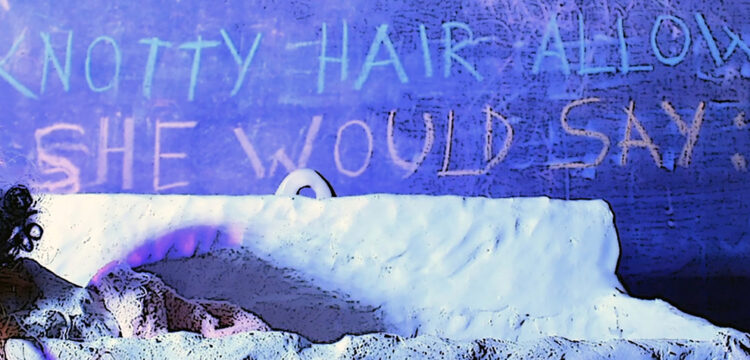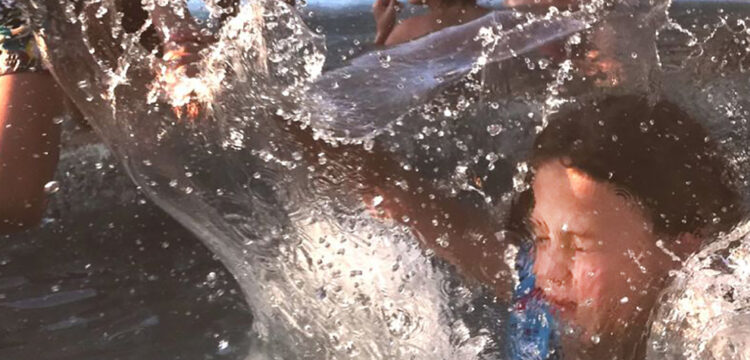Magpies in the Melamine
A neon green T-Rex in a mask, guilty demons wielding obscure kitchen tools and sinister devices
Ruth is a collector of writings, a site dedicated to grey literature, unpublished and experimental texts. Conceived by Manuela Pacella, Ruth was born from the pleasure of writing and reading. Each month, we select a text from one of the sections of the four-headed Ruth: Yellow Dog, Hungry Ghosts, Free Spirits, Brain New.
This month we chose from Brain New Magpies in the Melamine, written by Paul Becker in response to the drawings of Alessandra Giacinti exhibited at TUORLO for spaziomensa, Rome in November 2021.
On odd days, the air here is so suddenly light and strange. It is indescribable; like looking through a crystal in the sun, the inner workings of a diamond. On other days, it is so dull and heavy we have to drag ourselves along, the whole family. It’s as though it is too much for the birds to leave the trees, as though they will collapse under the weight of it. Sometimes it is too grey to bear. We stay inside and read off all the days to come in the calendar. Under the duvet, we unravel the daily mass of leads and tangled chargers. We feed the children too much milk from our breasts, romp in the nude. They (the children) crayon images on the kitchen walls that narrate the gentle passage of our days but also describe our sudden inexplicable sadnesses, our rages, our boredoms. Monsters appear, plucking at their own fur, weeping or grimacing: a neon green T-Rex in a mask, guilty demons wielding obscure kitchen tools and sinister devices. Images come and go, they appear without warning and are quickly erased.
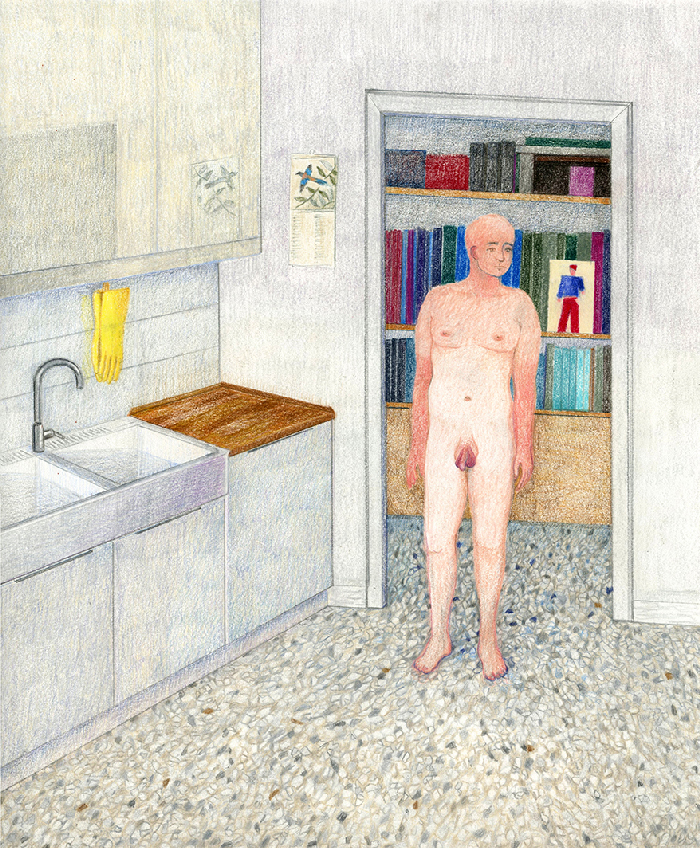
Also, on some days, the street is lit up by beautiful soft rays of colour and we all run hand in hand to the park or sit together by the fountain. We watch people passing on the street, on their way somewhere or just dawdling, their clothes gaudily illuminated, their faces brightly lit.
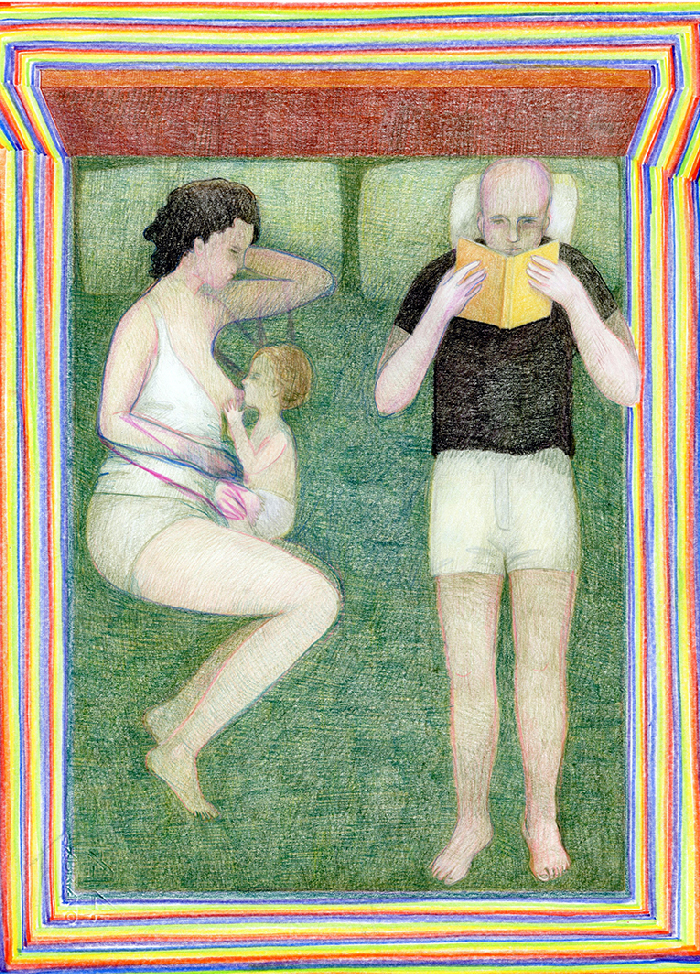
On one such day—a coloured day—we discovered one of our children just standing there, looking at a painting in the room we used to use for yoga. Something had happened. The child had been there for hours though we didn’t know he was gone. We were lying in the bedroom. My partner was reading and I was lying at their side. We were breastfeeding the youngest. We thought the other child was still occupied with that huge, endless, sprawling, epic jigsaw we had found at the house of a dead relative and brought back. The image was Tintoretto’s Battle of Lepanto and we had been working on it together for almost a year. But no. The jigsaw had not suffered a single addition. It must have been our tired eyes or how the light flickered against the green walls on one of those days of soft colour but it appeared that he was standing in the middle of the room while the bright, pink painting suffused him with light, we could clearly discern the energy pulsing, pulsing from the surface of the painting, tiny rays and shafts of colour, of cerise, salmon, rose and magenta. He was completely transfixed by it, his face blushed the same shades of pink. But as soon as we layed our hands on him, the rays of pink light died away.
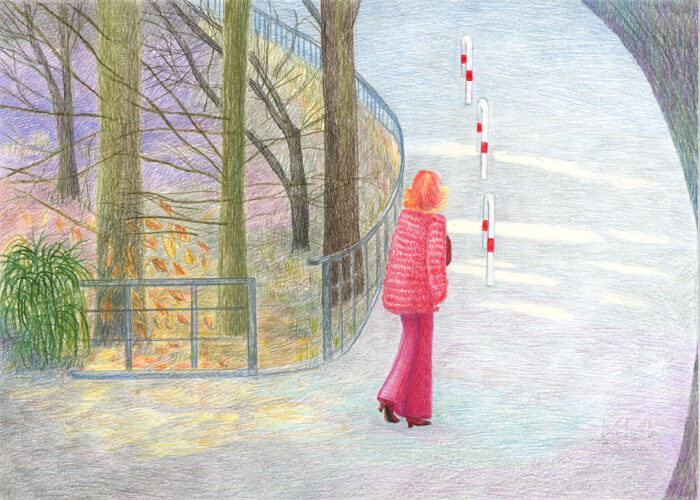
Meanwhile, our youngest child is increasingly obsessed with three identical twins, whom, she claims, live alone in a nearby flat. She says they are all blonde with emerald glasses, each one wears a yellow flower in her Alice band. She says that the ceilings, floor and walls of their parentless apartment is painted with all the stars of the cosmos. She says that the twins know the location of every planet, every star. However, our eldest child tells her, on behalf of everyone, that her tale is unconvincing and that each of us will only believe what we can see with our own eyes. That night, when the children are no doubt asleep in their bed, we stand naked in the kitchen and discuss shaving off all our hair, as a family. We agree these are the golden years. It is the first day of a new month. We turn a new page on our Birds of Asia calendar and go from a white-browed fantail (August) to an Azure-winged magpie (September). The next morning, we wake with the idea we had been walking in our sleep again, but it is just a memory of us both that night, naked, talking in the kitchen.




